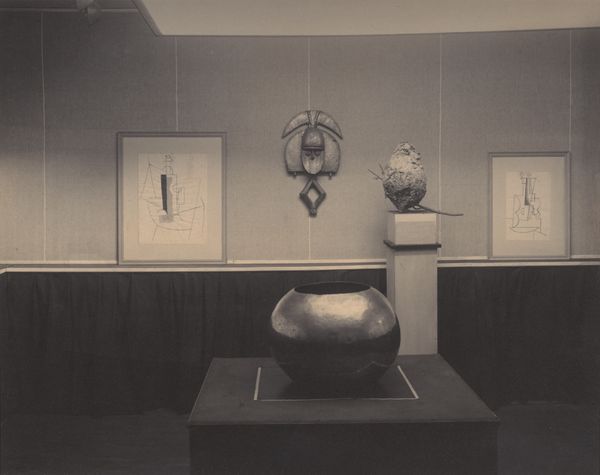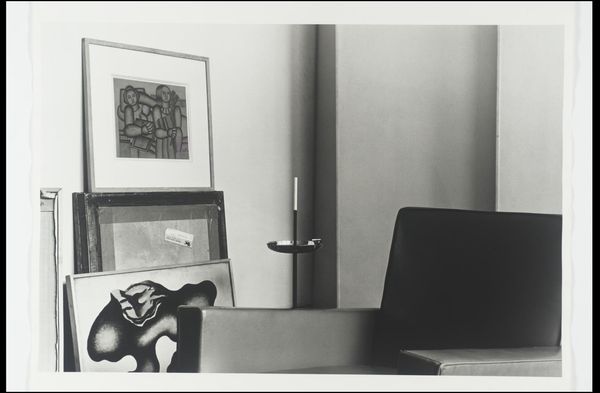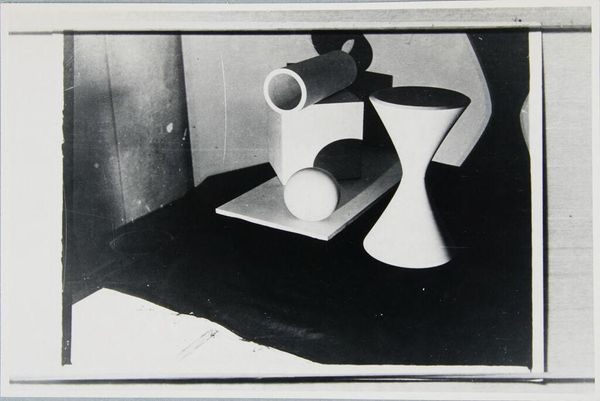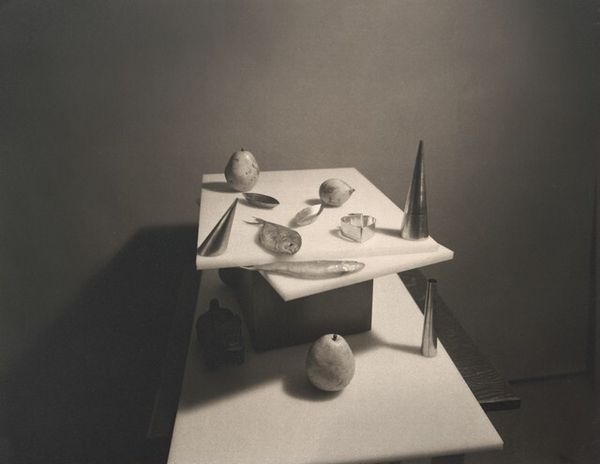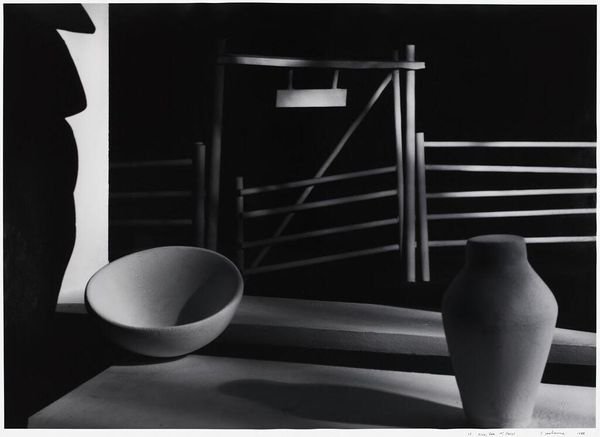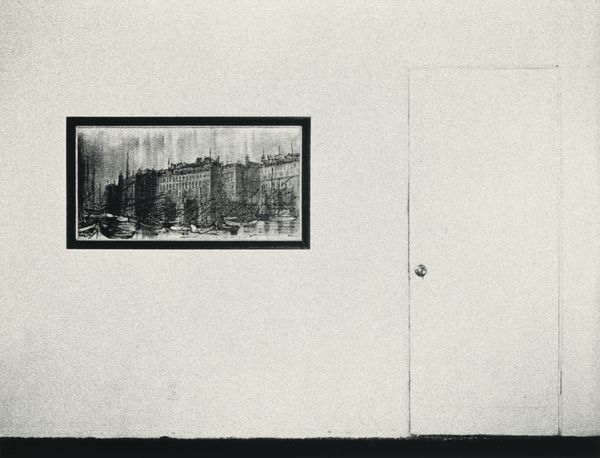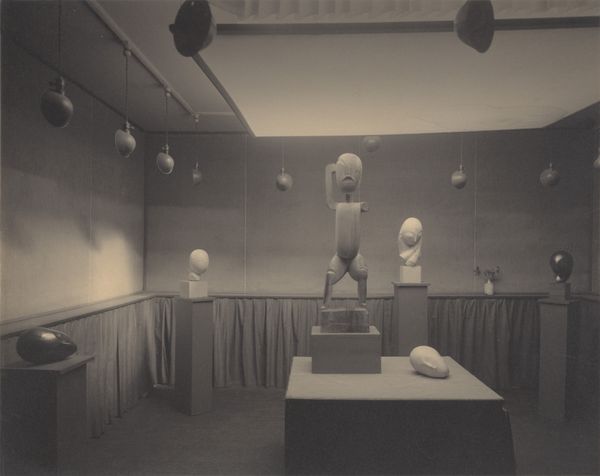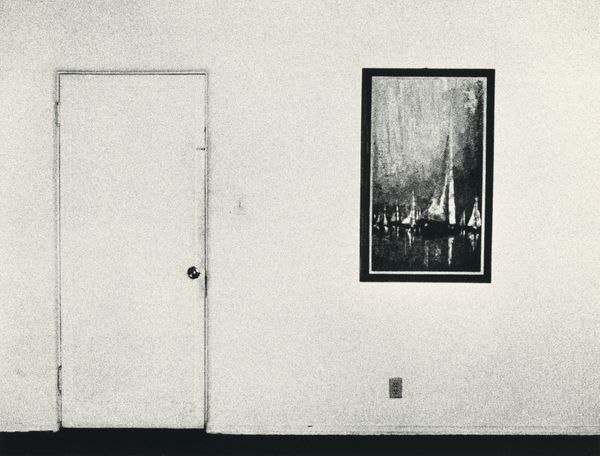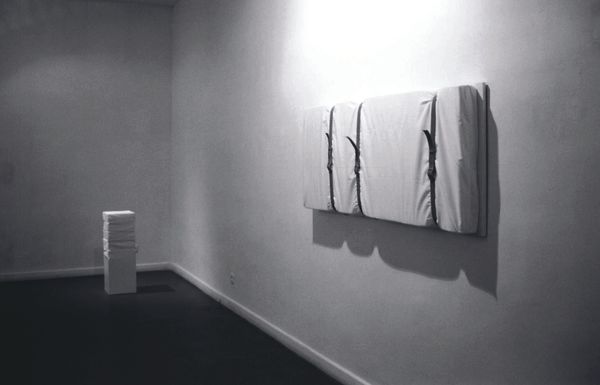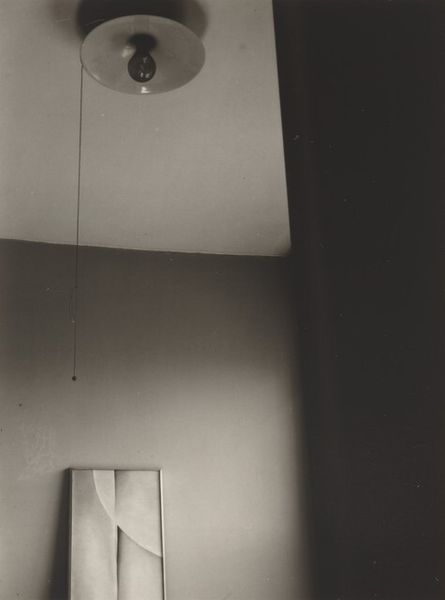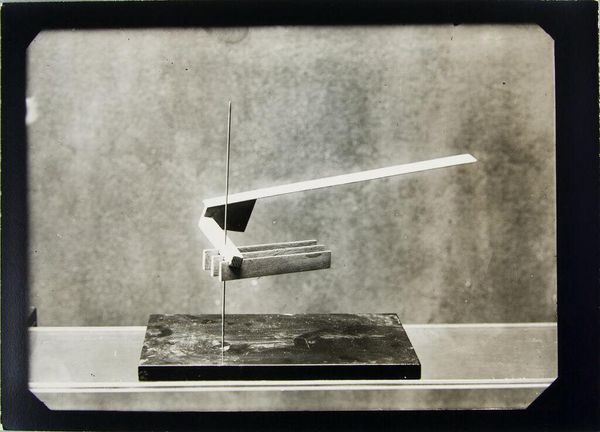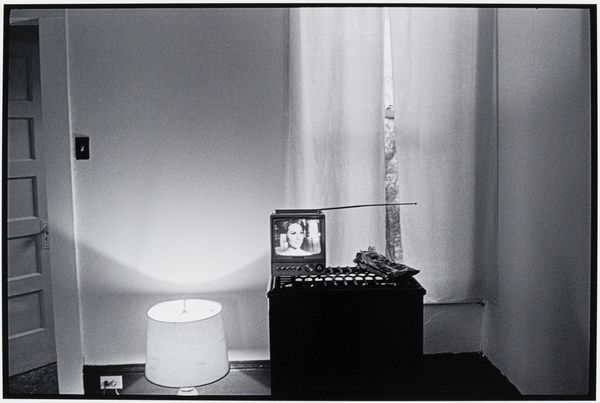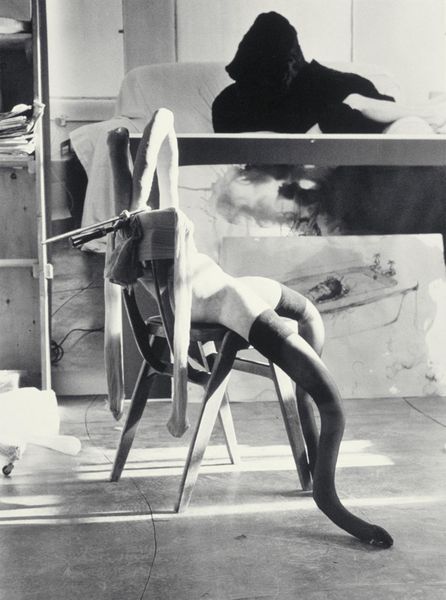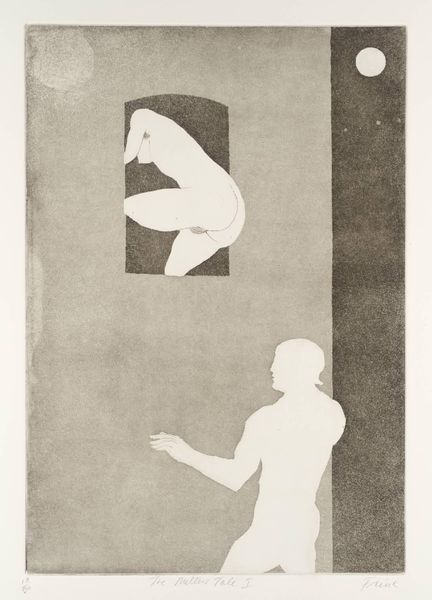
photography, gelatin-silver-print, installation-art
#
portrait
#
black and white photography
#
black and white format
#
photography
#
black and white
#
gelatin-silver-print
#
monochrome photography
#
installation-art
#
monochrome
#
modernism
#
monochrome
Dimensions: sheet (trimmed to image): 19.1 x 24.4 cm (7 1/2 x 9 5/8 in.) mount: 53.9 x 45.8 cm (21 1/4 x 18 1/16 in.)
Copyright: National Gallery of Art: CC0 1.0
Editor: This is Alfred Stieglitz's photograph "Georgia O'Keeffe—Exhibition at 291", taken in 1917. It’s a gelatin silver print capturing an installation view. I’m immediately struck by the sparseness of the setting – the artwork almost seems isolated in the gallery space. What’s your interpretation? Curator: Well, seeing this image, I immediately think about the cultural climate surrounding the avant-garde at that time. 291, Stieglitz’s gallery, was a key space for promoting modern art in America, challenging traditional artistic values. How do you think photography plays a role here? Editor: I suppose it adds a layer of authenticity. It's not just *representing* the art; it's documenting its display, adding to the historical record, like we're *there*. Curator: Precisely. Consider that Stieglitz wasn’t just documenting; he was constructing a narrative. This image, this installation, it's all about establishing O'Keeffe’s artistic persona. The minimalist installation aesthetic – quite radical for the time – reinforces a sense of profound, individual creativity. What sociopolitical forces were shaping the public’s relationship to art during the early 20th century? Editor: World War I, right? Maybe this starkness is a reaction against the chaos of war. A return to simplicity and introspection? Curator: Yes, and also the rise of mass culture. Artists sought to define themselves against commercialization, positioning themselves as holders of genuine creative vision. Also the developing cultural appreciation and appropriation of abstraction were major aspects in the imagery politics of the time. Editor: I hadn’t thought about the commercial aspect. I see now that the stark display also emphasizes the singularity of each work, almost defying easy consumption. Curator: It’s about controlling the narrative, shaping how O’Keeffe and her work were perceived. A fascinating example of the interplay between art, the market, and social forces. Editor: Thanks for pointing that out. Now I see how much the museum and those broader issues impacted how Stieglitz presented O’Keeffe.
Comments
No comments
Be the first to comment and join the conversation on the ultimate creative platform.
